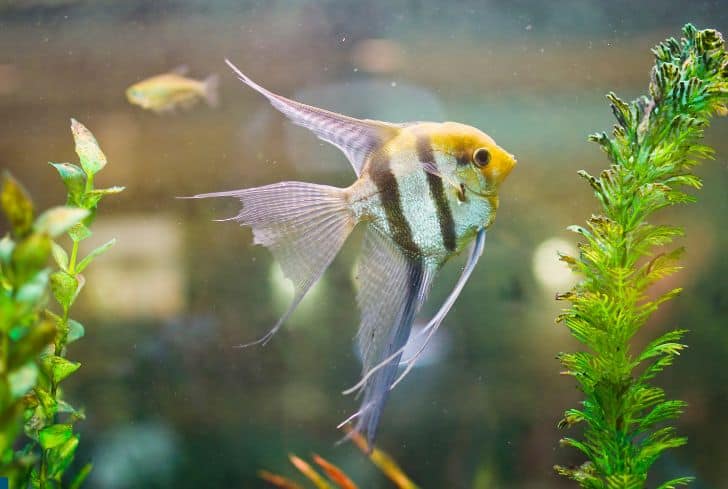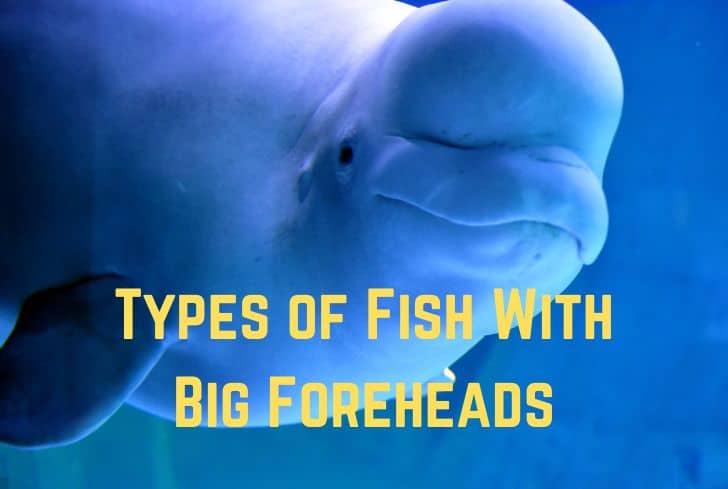17 Fascinating Fish With Big Eyes (With Pictures)

Did you know that there are over 30,000 fish species on earth?
Some of these fish make fascinating creatures thanks to their big eyes.
And while many of these fish have big eyes in relation to their bodies, others have incredibly huge eyes you’d think were wrongly placed on them (I’m looking at you telescope goldfish).
These modified big eyes enable fish to see clearly in dim lights when swimming in depths, say 3000 below sea level, where light barely penetrates.
Curious to learn more about these fascinating fish?
Well, in this post, we’ll explore 17 types of fish with big eyes, including their characteristics. And as a bonus, we’ve included images to give you a clear picture of each fish.
Read: 13+ Types of fish with big lips
17 Stunning Types of Fish With Big Eyes
1. Telescope goldfish

Telescope goldfish is a small fish that was first developed in China around the 1700s. While small in size, the fish has ridiculously protruding, big eyes that mimic a telescope, from where they derive their name.
However, the massive eyes of telescope goldfish don’t translate to better eyesight. Hence, the fish uses other methods to explore the deep waters, hunting and fleeing predators. The fish relies on silhouettes from other animals and swim vertically for proper movement detection.
These fishes are popular in many aquariums as their big protruding eyes make them fascinating to watch.
2. Horse-eye Jackfish
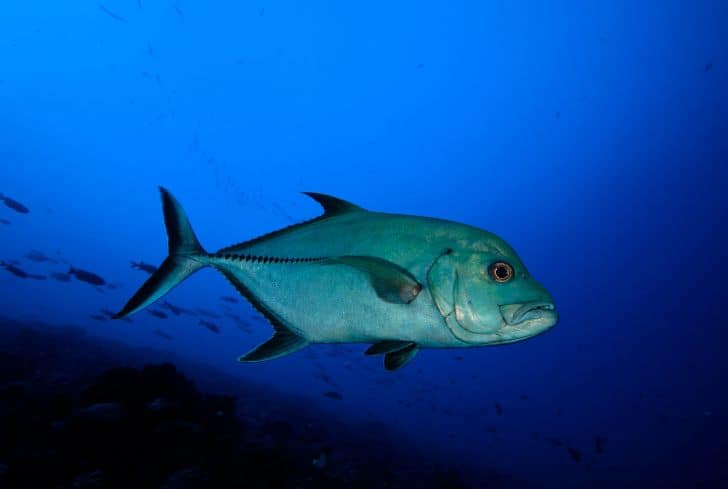
Horse-eye jackfish is a small freshwater fish from South America, commonly found in the Atlantic Ocean. Always moving in large schools, they’re regular game fish in South American countries, particularly Panama.
In comparison with their bodies, Horse-eye Jackfish have characteristically big eyes with decent eyesight. That proves vital as the fish prefers shallow waters and can thus see approaching predators.
Horse-eye jackfish are some of the fishes with long lifespans, with some living up to 30 years. However, with their sizes reaching up to 40 inches, the fishes are not common in many aquariums.
3. Tarpon
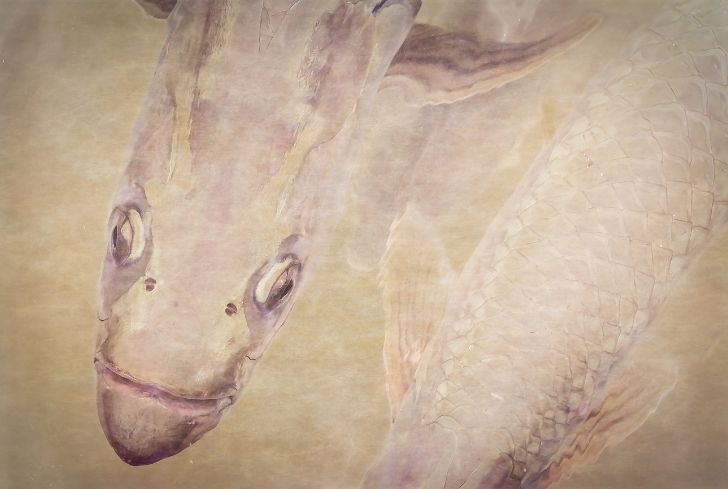
Native to Florida, the tarpon is a saltwater fish that lives in rivers and lakes. These large fish are not only blessed with large scales but also big eyes.
Interestingly, the eyes vary as the fish age, as an adult tarpon fish has large eyes than young ones. But that’s not surprising as tarpons have a distinct development compared to other fish, where they’re born and grow in low-light environments, and as they age, they emerge from the deeper areas and come closer to the surface.
And the eyes of these fish are not just big for nothing. They have a better color vision which makes them good predators.
4. Barracuda
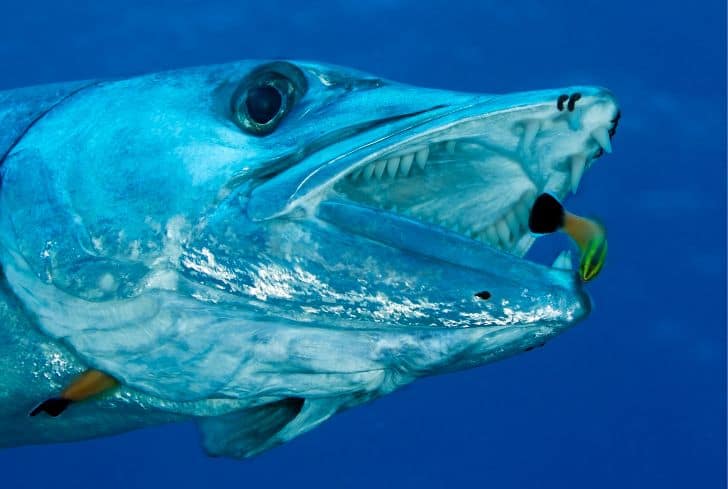
Also called Cuda, barracuda is large fish famous for its ferocious behavior thanks to its large and sharp teeth protruding from its mouth. They are found in sub-tropical and tropical waters, preferring water tops, and near sea grass and coral reefs.
The fish boast large, round eyes to see underwater and hunt effectively. The big eyes are extra-sensitive to the reflected light, allowing the fish to spot prey with little effort. But this adaptation works against humans. The fish are known to attack humans mistakenly as prey due to the light reflection.
But while barracuda have fearsome looks, ironically, they’re afraid of people.
Read: 15 Types of fish with big foreheads
5. Blue shark
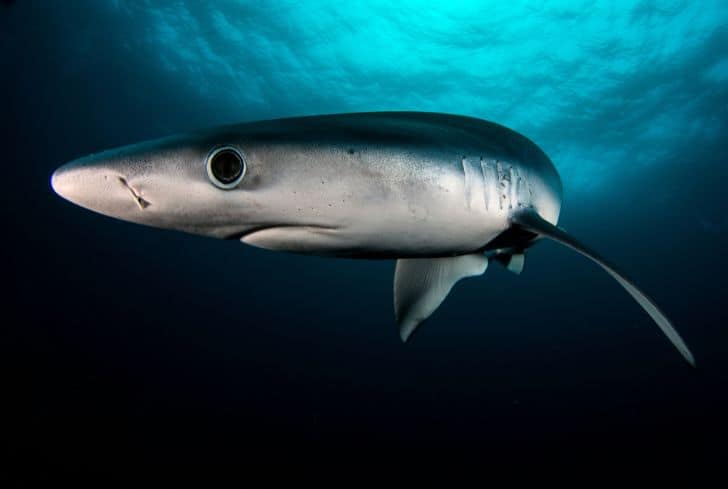
The blue shark is a species of requiem shark that likes exploring the deep waters in temperate and tropical oceans. Their name comes from the blue color of their dorsals.
As one of the ocean’s top predators, blue sharks have developed large eyes to detect prey movement from a distance. But the big eyes don’t translate to extraordinary eyesight, as blue sharks can only see as far as 50 feet. That’s why there are numerous blue shark humans, according to animal experts, as the fish mistake people for prey.
The bad news is that blue sharks are near threatened creatures, according to IUCN. That’s mainly due to overfishing – although their meat isn’t valuable, the poachers are after the fins, which make blue shark fin soup, while they also serve as decoration objects at home.
6. Swordfish
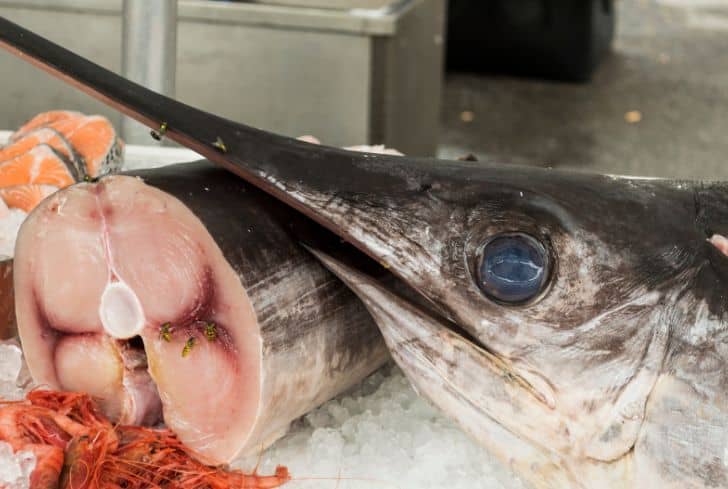
Swordfish are large, migratory predatory species from the family of swordfishes. Native to temperate and tropical regions of the Indian, Atlantic, and Pacific oceans, the fish can be seen near the surface while they can also swim up to depths of 2000 meters below sea level. They’re also found in aquariums due to their peaceful and friendly attitude towards other tank mates.
While swordfishes have long snouts and large heads, their most valuable asset is the big eyes. The fish prefer to hunt very deep into the ocean where the light is insufficient, so the big eyes come in handy as, apart from having decent eyesight, swordfish boast specialized muscles around the eyes to ensure enough warmth to enable the fish to spot and pursue prey. That makes swordfish expert hunters, which is further facilitated by the fish’s incredible travel speed.
7. Squirrelfish
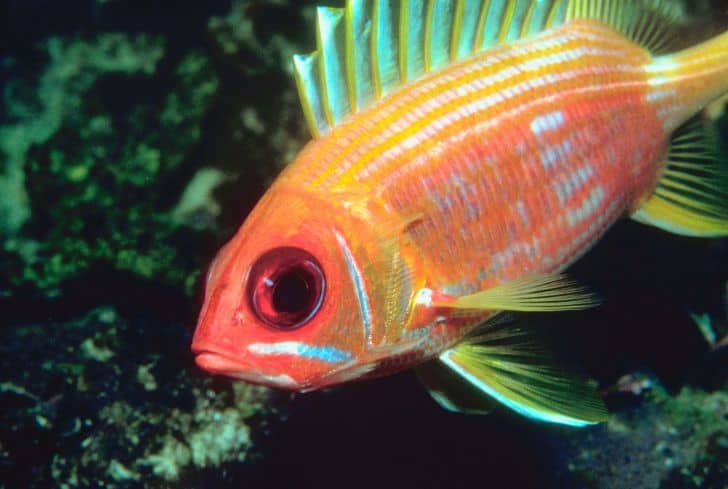
Squirrelfish are bright red or deep pink fish species native to subtropical and tropical waters of the Pacific, Indian, and Atlantic Oceans.
In the wild, squirrelfish often live near coral reefs, but they also like swimming in big schools to depths of 100 meters. They’re also popular in aquariums thanks to their beautiful coloration.
As nocturnal fish, swordfish have large eyes with an increased light reception, which help them to see better and hunt effectively at night when there’s no light. The fish also have an incredible sense of smell to make them pro hunters at night.
8. Rockfish
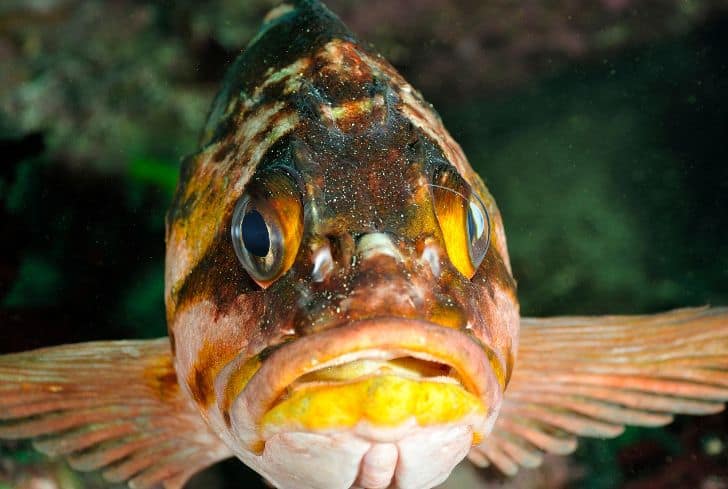
Rockfish is not a specific type of fish but an umbrella term for many fish species that love hiding among rocks in the ocean. Among these fish are groupers and striped bass. Many of the rockfish are worldwide, preferring rocky shores and coral reefs.
In compensation for their tiny mouths, rockfish have big eyes which look like a pair of dark circles. The big eyes prove crucial weapons, as the fish hunt more than 9,000 feet underwater where light is limited.
Fun fact; the eyes of rockfish become larger when you bring the fish to the surface.
9. Spotted ratfish
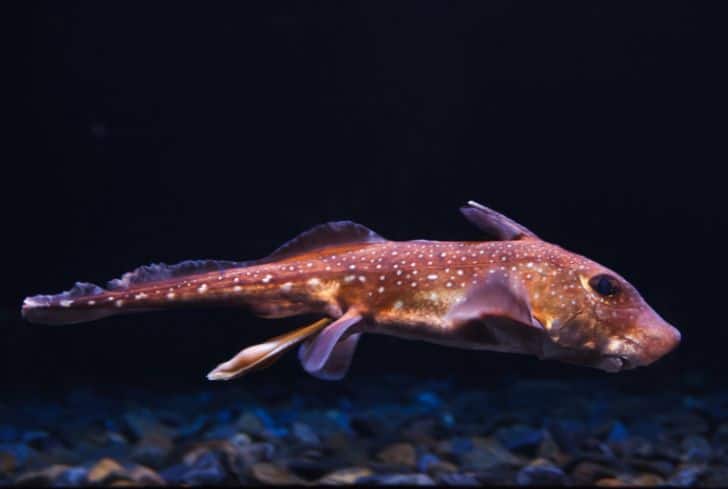
The spotted ratfish is a scaleless fish that’s abundant in the northeastern Pacific Ocean. They get their name from rat-like tails.
The strange-looking creatures have tiny bodies and large, bulging green eyes in comparison. But the big eyes are much appreciated for their excellent vision as the fish are mainly a deep water species that can swim as far as 900 meters below the water surface.
Ratfish can cause mild toxic wounds to humans via their dorsal fins, making the fish less ideal for pets. They’re also territorial and will invade other fish species.
10. Bigeye tuna
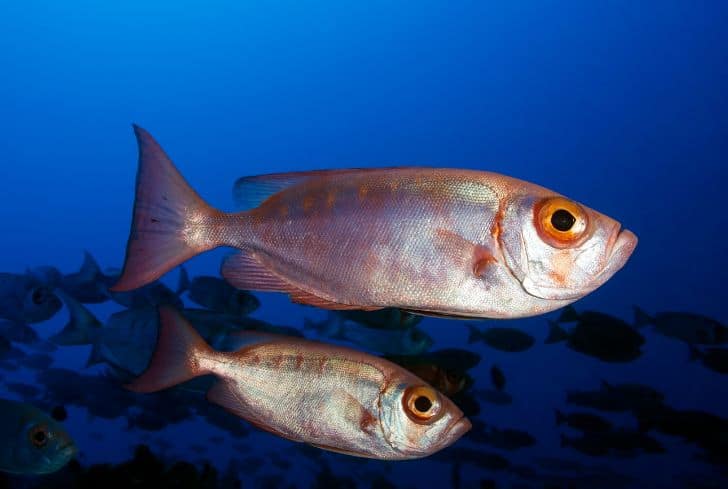
Reaching about 8 feet long and weighing potentially 200 kilograms, the bigeye tuna is one of the largest tuna species. They originate from the Eastern and Western Atlantic oceans.
These fish have torpedo-shaped bodies, dark blue metallic backs, and gigantic eyes to complete their odd looks. The eyes are so huge that they cover almost half of the fish head! The big eyes come in handy, providing excellent vision, as the bigeye fish often swim between 1000 and 4000 meters below the surface.
However, although they have distinct body shapes and beautiful coloration, bigeye tuna are rare in home aquariums because they can get excessively huge.
11. Pufferfish

Pufferfish are cute scaleless fish with rough to spiky skins. They live in the tropical and subtropical waters of South America, East Asia, and Africa.
As a survival strategy, pufferfish have a pair of wide-set protruding eyes with acute eyesight to allow the fish to spot and track prey and identify potential predators.
Another survival strategy for these little guys lies in their unique ability to take in large amounts of water, puff it out and double their size to ward off predators.
But don’t let their small size and fascinating looks fool you. Pufferfish are the second most poisonous invertebrates, carrying venom enough to kill up to 30 people!
12. Bigeye Fish

Bigeye fish are medium-sized deep sea water fish endemic to subtropical and tropical regions of the Pacific and Indian oceans. They live to their name, with large circular eyes, which are a gift to their nocturnal and deep water lifestyle.
Bigeye fish belong to the priacanthidae family, which includes more than 50 small deep water species. They constitute fish with short lifespans, as they cannot live beyond nine years.
13. Genie’s Dogfish
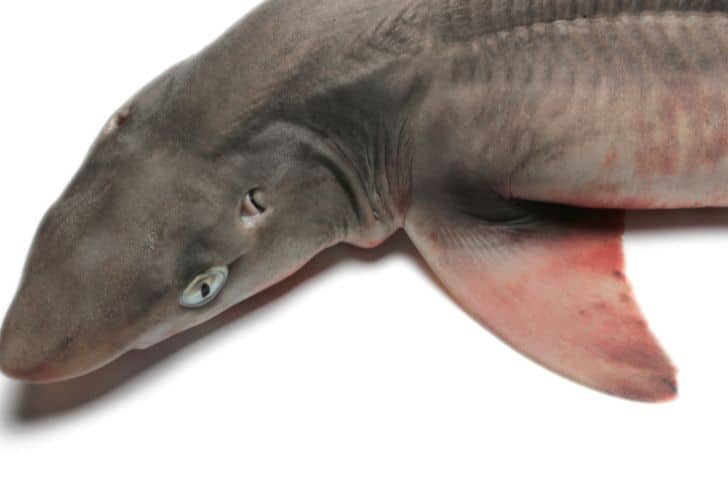
Genie’s Dogfish are adorable fish with elongated bodies found in the Atlantic Ocean. Their Dogfish name is because of their heads that mimic a dog’s snout.
The odd-looking fish have mouths packed with sharp teeth and massive round cartoon-like eyes. These eyes are sensitive to light and can see shapes, colors, and even movements in the dark, allowing the fish to cruise in deep waters.
Genie’s Dogfish can grow to about 6 feet. So they won’t make great pets. And worse, like pufferfish, they possess venom on their dorsal spines, which can harm you when you touch them.
14. Bigeye thresher shark
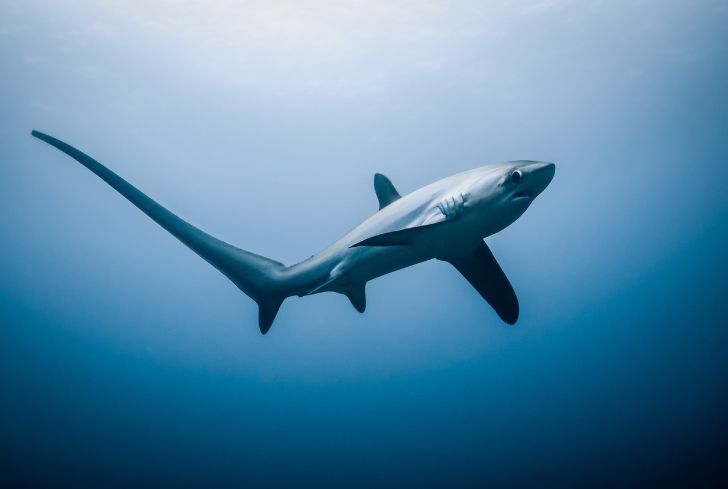
Growing up to 20 feet, the Bigeye thresher shark is an enormous fish found in tropical and temperate oceans worldwide. Despite their size, thresher sharks are considered harmless to humans, and you can sometimes see them leaping out of oceans.
As the name suggests, Bigeye thresher sharks have enormous eyes to help detect prey in low light conditions, as the fish prefer descending to deep waters during the day to explore. And at night, the sharks swim near the surface to feed, so you can guess how vital the big eyes equipped with excellent vision are to the sea creatures.
Their beautiful coloration, which includes blue, purple, brown, and gray, makes these creatures amazing to watch. But although harmless, you’d never think of keeping these thresher sharks as pets due to their size.
15. Panda telescope

Panda telescope fish is a variation of telescope goldfish with distinctive black and white patterns. They’re ornamental fish as they can change their original coloration to orange or white as they age.
Panda Telescopes are also famous for their big bulging eyes, which continue to develop as the fish age. Located on the top of the head, the eyes boast excellent eyesight to enable the fish to see objects about 10 feet away, which is quite a feat in dark, murky waters.
The telescope is another fish you can add to your home aquarium as it can’t exceed 10 centimeters in length, needs little care, and even better, due to its spectacular finnage and beautiful coloration. Some people even raise these fish in bowls!
16. Celestial Eye
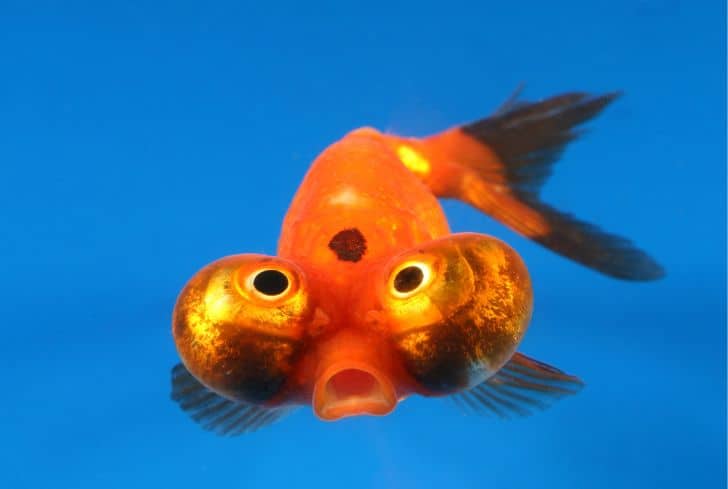
Celestial Eye is a double-tailed variety of goldfish that lives in tropical waters in various countries, including Thailand, Indonesia, and Singapore.
They have metallic scales, and their bodies are decorated with red, white, or red shades. However, the most distinctive feature is the upward-facing telescope eyes on top of their heads. The big eyes are equipped with a crystalline lens to help focus light on the retina for excellent eyesight, enabling the fish to find food and flee from predators in areas with little to no light.
But while adorable, the fish are hard to maintain in captivity. They’re sensitive to cold water temperatures and cannot compete for food with other types of aquarium fish. They only do well if you keep them in their own tanks where you can provide special attention.
17. Narrow-lined puffer
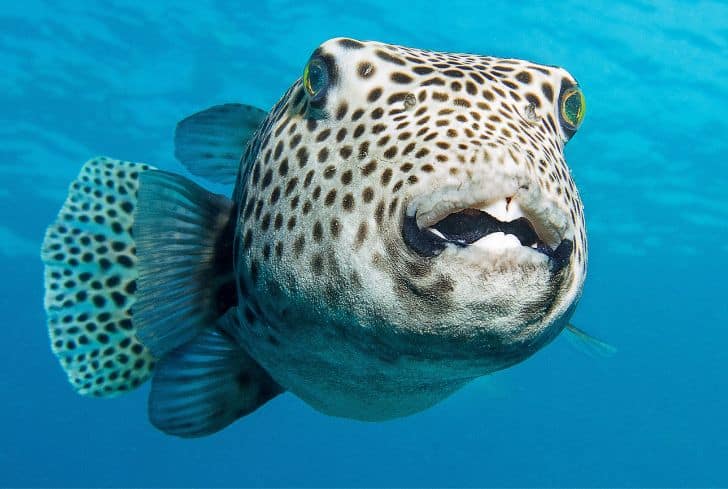
Narrow-lined puffer is a small, oval-shaped scaleless fish that lives in estuaries of tropical waters of the Central Indian and Pacific Oceans.
The freshwater fish have pillowy bodies with distinctive milky tan color and alternating bands from the tail to the head. This elegant body design, coupled with the large, round eyes on either side of the head, make these fish one of the best to watch. The big eyes of the Narrow-lined puffer are to thank for the excellent vision to allow the fish to spot food from a far distance.
The fish are hardy and easy to feed, but they also require special attention and specific food, making them undesirable as pets.



